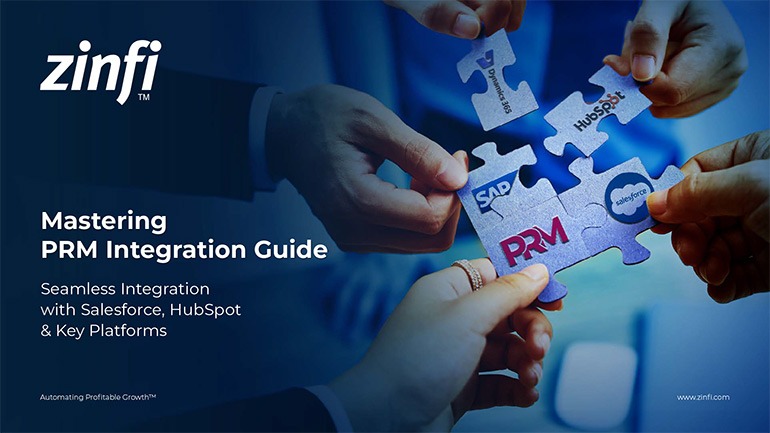Glossary - How to - Partner Ecosystem
How to Build a Successful Partner Ecosystem?
Introduction
A partner ecosystem is a network of interdependent organizations collaborating to create value for mutual benefit. This ecosystem may include resellers, distributors, technology providers, service partners, and affiliates. A well-structured partner ecosystem allows businesses to expand their market reach, leverage complementary expertise, and deliver comprehensive solutions to customers.
In Partner Relationship Management (PRM), automating partner interactions and streamlining engagement processes are crucial for success. PRM platforms enable organizations to manage partner relationships more effectively by providing structured workflows, seamless onboarding, and data-driven insights. By leveraging PRM tools, businesses can build a thriving partner ecosystem that drives revenue growth and long-term sustainability.
Key Takeaways:
Define Your Partner Ecosystem Strategy:
Before building a partner ecosystem, organizations must define their objectives. These may include revenue growth, market expansion, innovation, or improved customer support. A clear strategy should outline:
- Target partner profiles (e.g., VARs, MSPs, system integrators, etc.)
- Business models and incentives for collaboration
- Metrics for measuring partner success
Implement a Partner Relationship Management (PRM) Platform:
A PRM platform helps centralize partner interactions, making it easier to manage relationships at scale. Key benefits include:
- Automated onboarding and training programs
- Centralized access to marketing and sales materials
- Performance tracking and analytics
By integrating a PRM system, businesses can streamline communication and ensure consistent engagement across all partner types.
Foster Strong Partner Engagement:
Engagement strategies to maintain a flourishing partner ecosystem should focus on
- Providing consistent communication through newsletters and partner portals
- Offering co-marketing opportunities
- Recognizing top-performing partners with incentives and rewards
Engagement is critical to ensuring long-term partner commitment and success.
Optimize Partner Enablement and Training:
Equipping partners with the right tools and training is key to driving performance. Effective enablement includes:
- Access to e-learning platforms and certifications
- Sales playbooks and product guides
- Ongoing technical and sales support
Organizations should regularly update training materials on industry trends and product innovations.
Measure and Scale Your Partner Ecosystem:
Tracking performance metrics allows businesses to refine their partner strategies over time. Important metrics include:
- Partner-sourced revenue
- Customer satisfaction ratings
- Partner retention and engagement rates
Analyzing these metrics helps organizations identify areas for improvement and expand successful partnerships.
Summary of Key Takeaways:
- Clearly define your partner ecosystem strategy to align with business goals.
- Implement a PRM platform to manage and automate partner relationships efficiently.
- Foster strong partner engagement through communication, incentives, and co-marketing efforts.
- Optimize partner enablement and training to ensure partners have the necessary resources.
- Continuously measure and scale the partner ecosystem using key performance metrics.
Key Examples:
- Automotive Manufacturing: In the automotive sector, a strong partner ecosystem enables manufacturers to collaborate with suppliers, technology providers, and dealerships to streamline production and enhance customer experience.
- Consumer Electronics: Consumer electronics companies leverage partner ecosystems to distribute products efficiently and provide after-sales services through authorized service providers.
- Energy Production: In energy production, partnerships between technology vendors, utility companies, and service providers enable the use of smart grid solutions and renewable energy projects.
- Financial Services: Banks and financial institutions work with fintech startups, regulatory bodies, and cybersecurity firms to create secure and innovative digital banking solutions.
- Food and Beverage: In this industry, distributors, suppliers, and logistics partners ensure efficient supply chain management and product distribution.
- Healthcare Services: Healthcare providers partner with pharmaceutical companies, medical device manufacturers, and telemedicine platforms to enhance patient care and improve medical research outcomes.
- Information Technology: IT firms rely on system integrators, managed service providers, and software vendors to deliver comprehensive IT solutions to enterprises and SMBs.
- Pharmaceutical Development: Collaboration between research institutions, biotech firms, and regulatory agencies is vital for accelerating drug development and clinical trials.
- Retail Industry: Retailers build ecosystems with e-commerce platforms, logistics providers, and digital payment processors to enhance the online shopping experience.
- Telecommunications: Telecom providers work with network infrastructure companies, software developers, and content providers to expand broadband connectivity and improve service offerings.
Conclusion:
A well-defined partner ecosystem drives business success by fostering collaboration, enhancing market reach, and improving customer experiences. Implementing a PRM platform ensures structured engagement, streamlined operations, and measurable growth. Organizations across various industries can benefit from building a strong partner ecosystem to stay competitive in today’s dynamic marketplace.
Associated Keywords:















